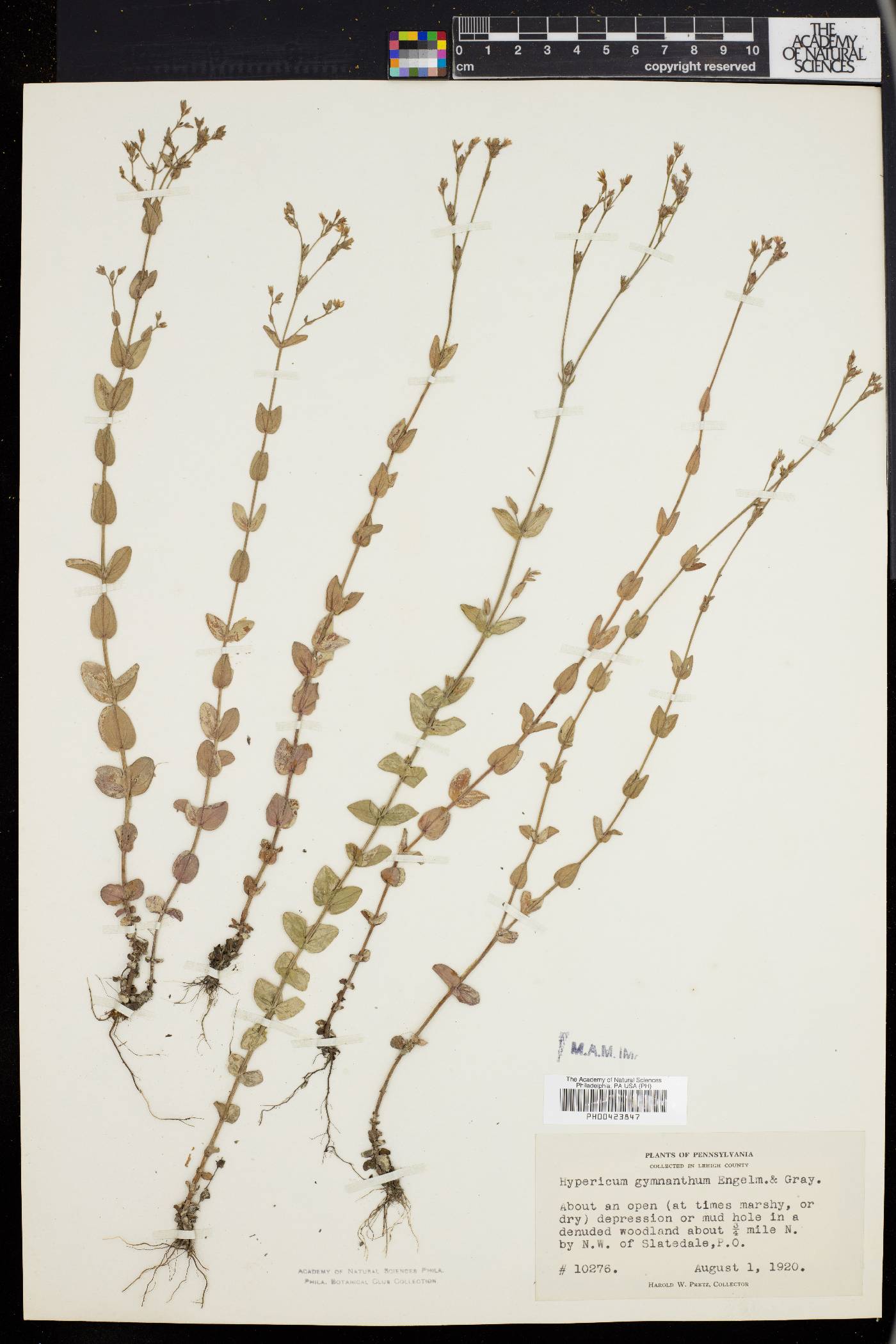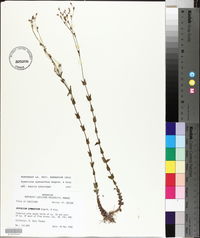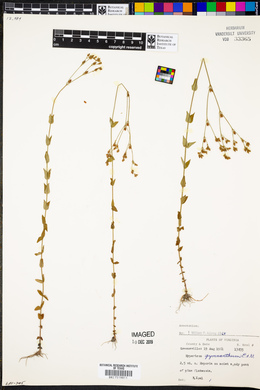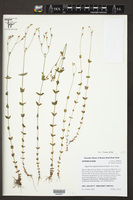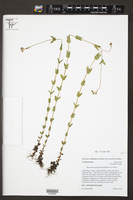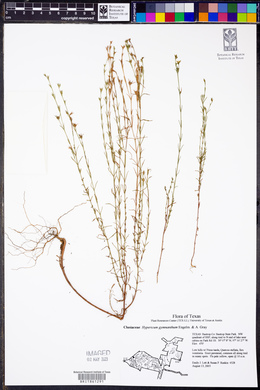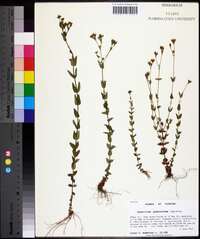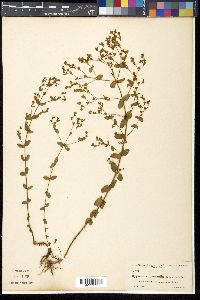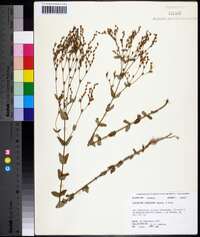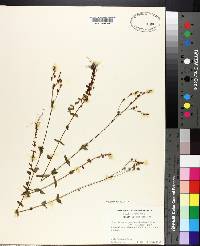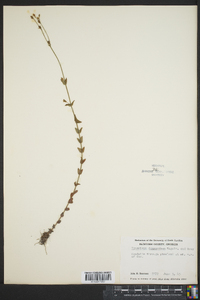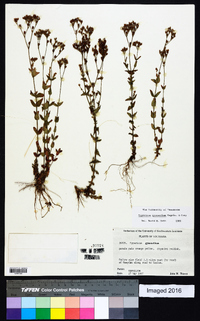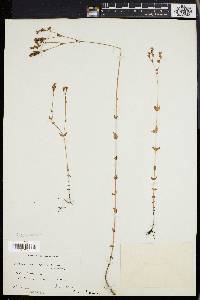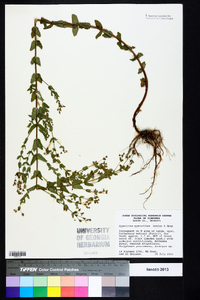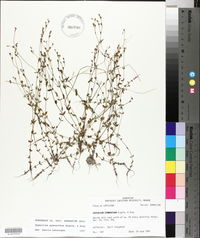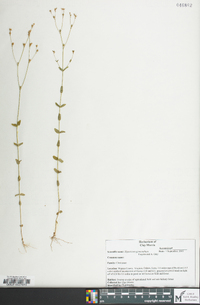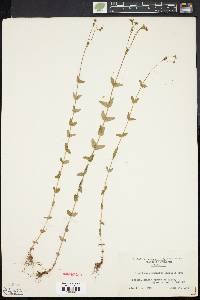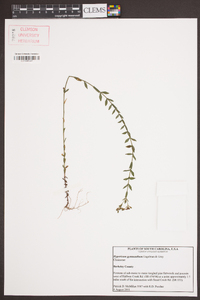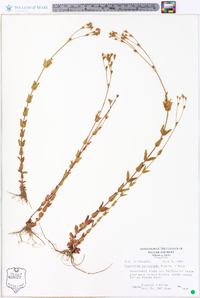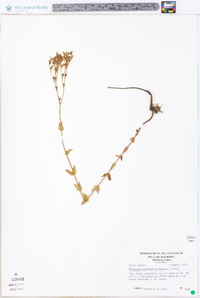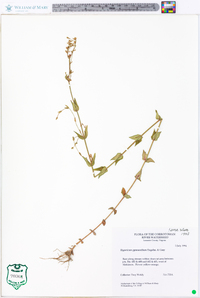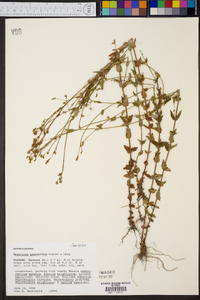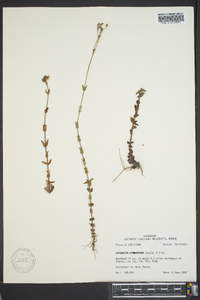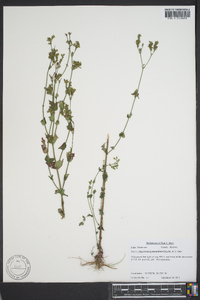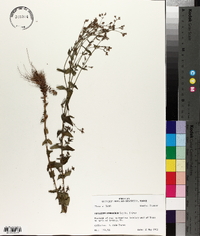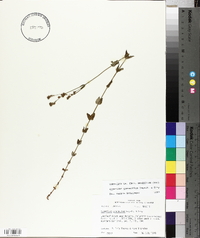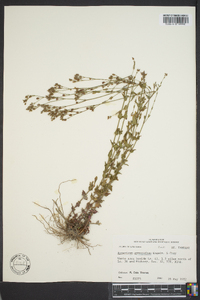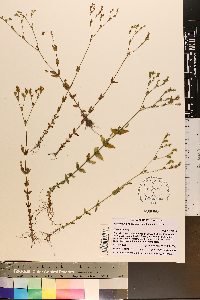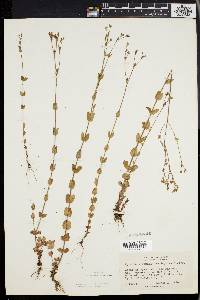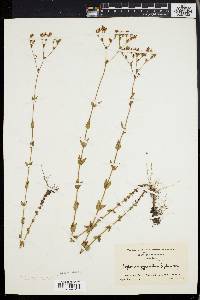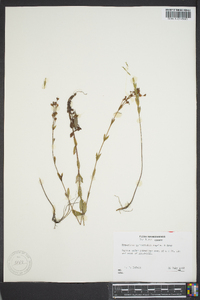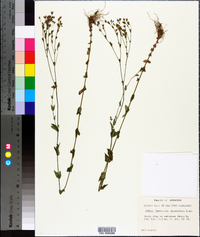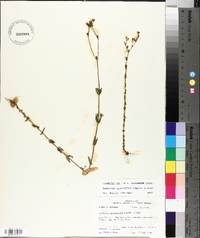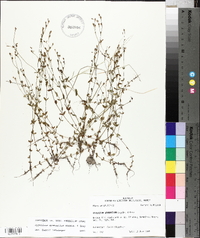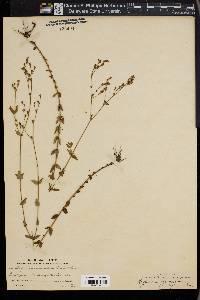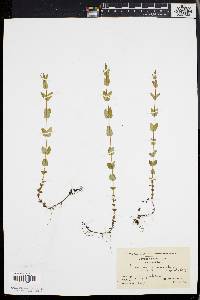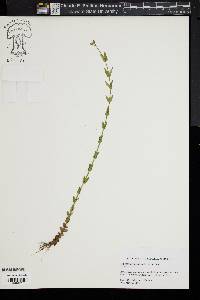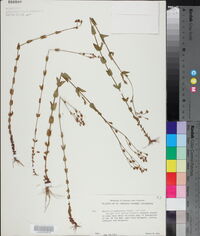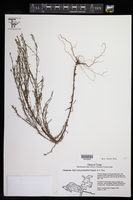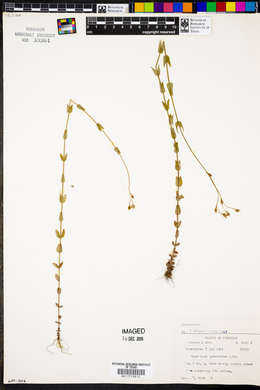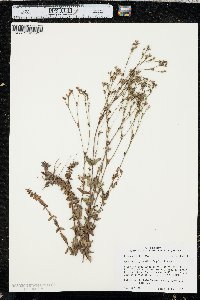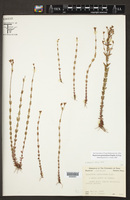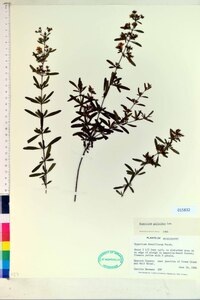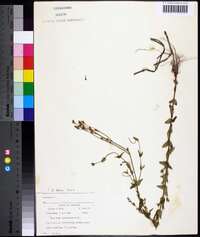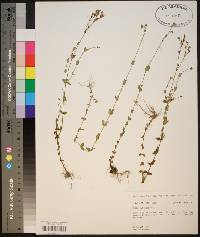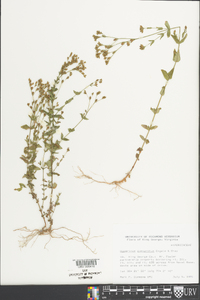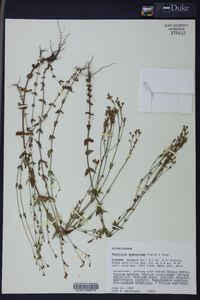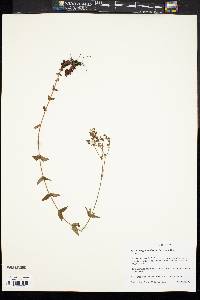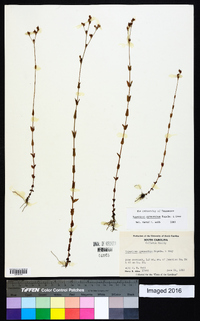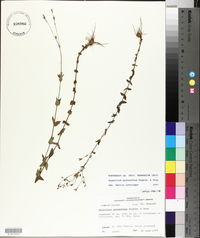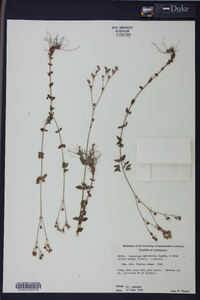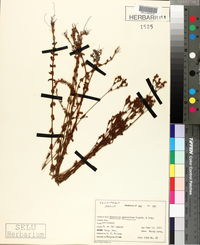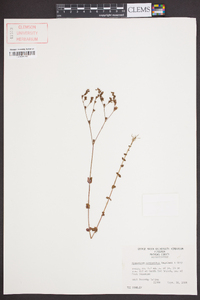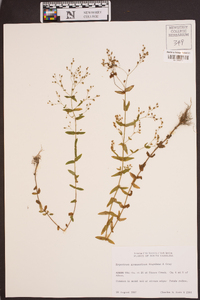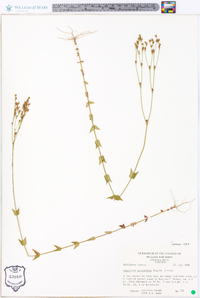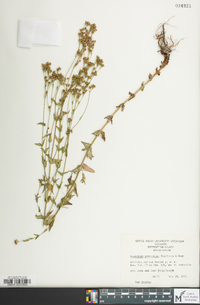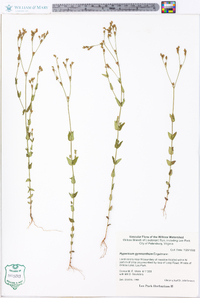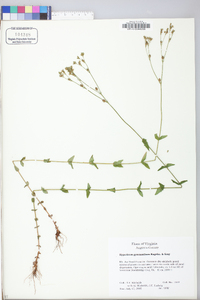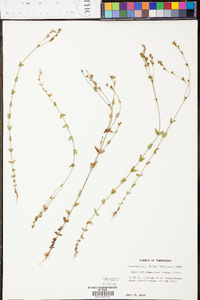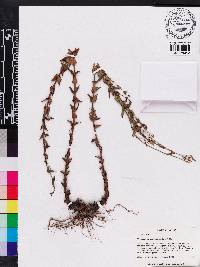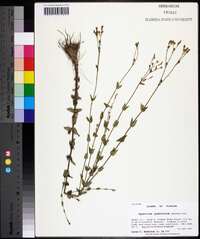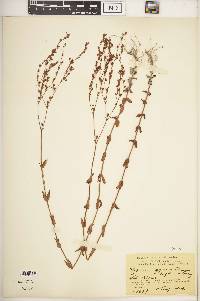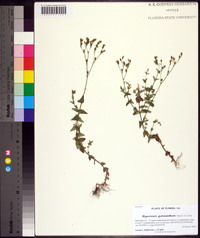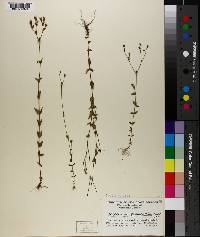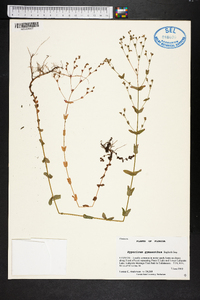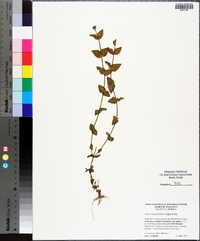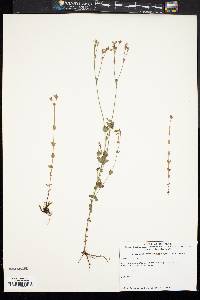
|
|
|
|
Family: Hypericaceae
Clasping-Leaf St. John's-Wort
[Hypericum canadense var. cardiophyllum R. Keller] |
Annual herb 20 cm - 0.7 m tall Stem: usually unbranched, rarely branching near the top. Leaves: opposite, nearly stalkless, 1.5 - 3 cm long, triangular lance-shaped or triangular egg-shaped with a rounded or nearly heart-shaped base, non-toothed, five- to seven-veined with outer veins at right angles to midvein. Flowers: borne above the foliage on a long-stalked open inflorescence, subtended by awl-shaped bracts, with 3.5 - 5 mm long sepals that are lance-shaped and widest well below the middle with a pointed tip, narrow petals 3 - 3.5 mm long, ten to fourteen stamens, and three styles less than 1 mm long. Fruit: a one-chambered capsule, 3 - 5 mm long, lance-shaped to narrow conical, many-seeded. Seeds are 0.5 mm long with longitudinal ridges that can barely be seen at 10x magnification. Similar species: Hypericum boreale, Hypericum canadense, Hypericum gentianoides, Hypericum gymnanthum, Hypericum majus, and Hypericum multilum have fewer than 25 stamens per flower. Hypericum boreale can grow as an aquatic or in wet soils. It reaches 10 - 40 cm tall, has stalkless oblong to oval leaves that are less than 2 cm long, and the flowers have leaf-like bracts, 2.5 - 3 mm long petals and eight to fifteen stamens. Hypericum canadense differs because it is 10 cm - 0.6 m tall, the linear to lance-shaped leaves are more than three times as long as wide and single-veined or lightly three-veined, and the flowers have awl-shaped bracts, sepals less than 4.5 mm long, petals 2.5 - 3 mm long, and twelve to 22 stamens. Hypericum gentianoides has green wiry stems that are highly branched, minute scale-like leaves that are pressed against the stems, tiny yellow flowers with five petals and five to ten stamens, and capsules two to three times the length of the sepals. Hypericum majus has lance-shaped leaves that are more than three times as long as wide and five- to seven-veined, and flowers with awl-shaped bracts, 4.5 - 6.5 mm long sepals, 3.5 - 4 mm long petals, and fourteen to 21 stamens. Hypericum multilum differs by its stems that are highly branched near the top, leaves that are rarely more than three times as long as wide, flowers having 1 - 4 mm long awl-shaped bracts and linear-oblong sepals beneath the 1.5 - 2.5 mm long petals and five to sixteen stamens, and capsules that are rounded at the tip and 2 - 3.5 mm long. Flowering: June to September Habitat and ecology: Rare in the Chicago Region, this species has been found in wet sandy ground, low ground, and near lagoons and ponds. Occurence in the Chicago region: native Etymology: Hypericum is the Greek name for St. John's Wort, which blooms around St. John's Day (June 24). Gymnanthum means "with hidden flowers." Author: The Morton Arboretum Erect annual 2-7 dm, simple or seldom branched above; lvs deltoid-lanceolate or deltoid-ovate, broadly rounded or subcordate at the closely sessile base, 1.5-3 cm, 5-7-nerved; infl loose and open with long internodes, the cymes raised above the uppermost foliage lvs on a long peduncle; bracts subulate; sep lanceolate, acuminate, 3.5-5 mm; pet narrow, 3-3.5 mm; stamens 10-14; styles 3(4), under 1 mm; fr lanceolate or narrowly ovoid, 3-5 mm; seeds 0.5 mm, the longitudinal ridges barely visible at 10 2n=16. Moist or wet, usually sandy soil, chiefly on the coastal plain; s. N.J. to Fla. and Tex., and at scattered more inland stations to Pa., O., Ind., Ill., and Mo. Gleason, Henry A. & Cronquist, Arthur J. 1991. Manual of vascular plants of northeastern United States and adjacent Canada. lxxv + 910 pp. ©The New York Botanical Garden. All rights reserved. Used by permission. From Flora of Indiana (1940) by Charles C. Deam Indiana Coefficient of Conservatism: C = 4 Wetland Indicator Status: OBL |

